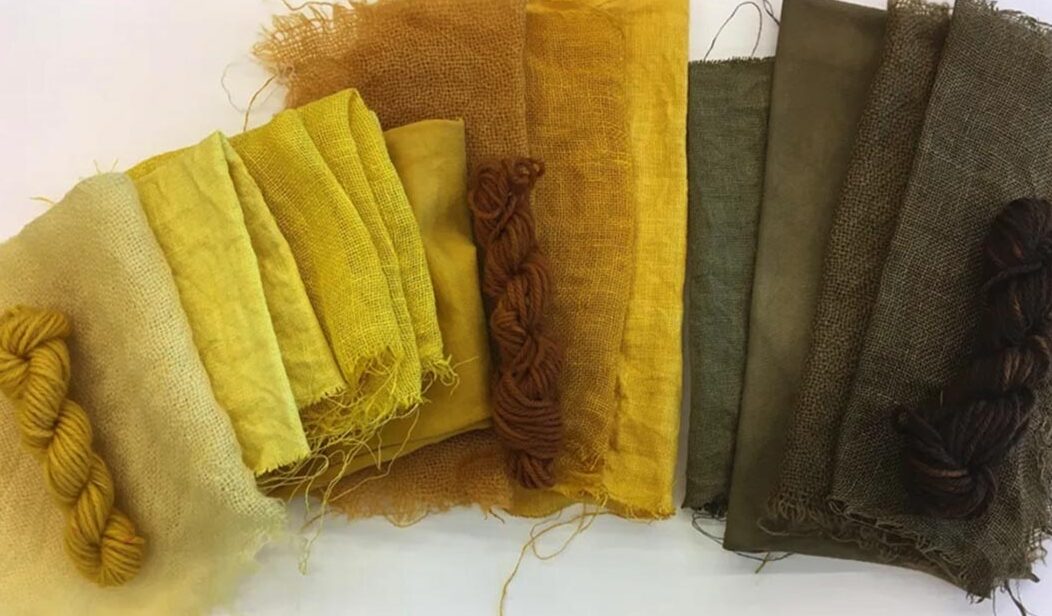Bio-based Dyes Fueling Vibrant Change to Produce Natural Colors
Following the shift from plant and animal-derived dyes to synthetic ones, there is now a growing appetite for non-toxic, bio-based dyes to both enhance product performance and reduce environmental impact.
Much has been written (in this Journal especially) about the dangers of microplastics from textile fibers entering the environment. But what about the dyes, almost all exclusively derived from petroleum, that color these fibers?
While more and more consumers are turning to labels to check whether they are purchasing sustainably made products, as well as noting the fiber content and country of manufacture, few consider the origin of the dyes and chemicals (which are never listed) that are used to produce the garment: colors are taken for granted, an afterthought at best.
Color is an intrinsic attribute of textiles, particularly for apparel and home textiles, where a visual aesthetic is a key feature. However, the synthetic colors widely used in the textile and other industries that end up in wastewater pose a serious threat to food chains and human health, as well as the natural environment.
Natural pigments have been used for thousands of years to dye textiles. Mauveine, also known as aniline purple and Perkin’s mauve, was the world’s first synthetic dye, discovered by William Henry Perkin in 1856, and this quickly led to the establishment of the global dyestuff industry.
Since then, more than 10,000 different types of dyes have been synthesized, with annual global production now estimated at one million tonnes in a market worth around $40 billion USD a year.
The textile industry is the biggest consumer of synthetic dyes, using up to 80% of total production; it also generates some 70 billion tonnes of dye-containing wastewater annually.
Wastewater Contamination
The major challenges of the textile dyeing process are wastewater contamination and the use of harmful chemicals. Many synthetic dyes contain hazardous substances such as heavy metals, aromatic amines and formaldehyde-based compounds. There is also evidence indicating that many of these substances are toxic, carcinogenic and/or mutagenic.
Other studies suggest that up to 80% of dye-containing industrial wastewater created in low- and middle-income countries are released untreated into waterways or used for irrigation, posing a range of
direct and indirect threats to human, animal and plant health. It is estimated that China, India and Bangladesh together discharge around 3.5 billion tonnes of textile wastewater each year.
Untreated dyes can cause discoloration of water bodies, reducing the degree of visible light that passes through the surface layer and hindering the photosynthesis necessary for aquatic plants. Microalgae, which form the basis of the aquatic food chain, can suffer from growth inhibition and cell deformation when exposed to synthetic dyes.
Meanwhile, dyes can build up in fishes’ gills, lateral lines or brains, leading to toxicological effects and lowering reproductive rates. Toxic dyes can also bioaccumulate in the fishes’ tissue, presenting health hazards to humans and animals along the food chain.
On land, dyes can disturb the microbial balance of the soil – and in humans. Exposure to dyes can trigger allergies, asthma and diseases including dermatitis and central nervous system disorders, as well as organ dysfunction and increased risk of cancer.
Most dyes and other colorants can be removed from water using chemical, biological, physical and emerging membrane-based nano-scale filtration technologies, although some of these methods can be highly energy intensive. Legislation may also be needed to compel dyestuff producers to eliminate colorants before they reach public sewage systems or waterways.
Sustainable Alternatives
The use of non-toxic and biodegradable colorants can enable more sustainable solutions for textiles, which will help in the move toward a circular economy in the textile and printing industries. A number of alternatives have been proposed, while regulations and industry initiatives are being developed to promote responsible practices in dyestuff production and disposal.
For example, there is increasing research being carried out on the use of fungal pigments in the textile industry. Their non-toxicity, higher yield during production and natural safety make such bio-based pigments and dyes a promising alternative to synthetic dyes.
Collaboration on Microbial Fermentation
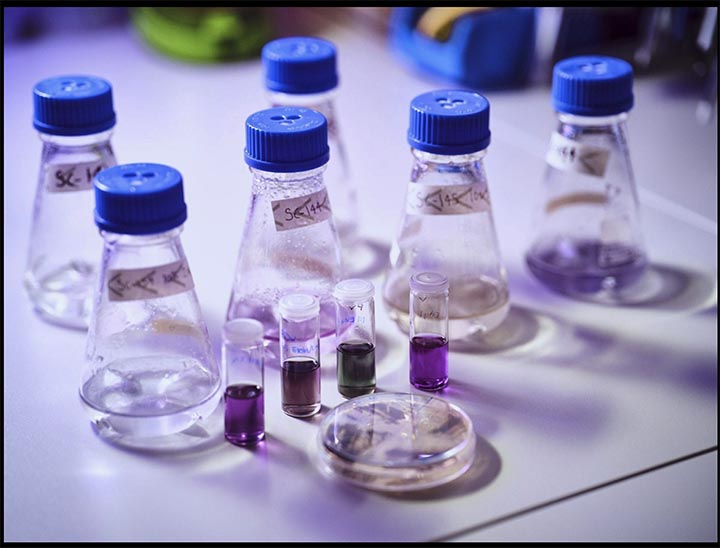
A number of start-ups have entered the bio-based dyestuff sector over the past decade or so, mostly backed by seed funding, with a range of pioneering technologies and novel chemistries being proposed, some with ambitious targets.
Octarine Bio has raised an additional €4.35 million (more than €12 million to date), to help scale production of microbially fermented bio-based dyes. Using violacein and its derivatives, the Denmark-based company with expertise in enzymatic derivatization has developed vibrant and sustainable natural dyes called OB-CLR that offer a color spectrum that allows for vivid purples, blues, pinks and greens – unlike traditional nature-based colors that are often characterized by dull, earthy hues.
Octarine’s OB-CLR colors bind directly to textiles without the use of mordants or other chemical additives, which is said to result in significantly less water and energy use and removes toxic chemicals from the dyeing process.
In 2023, the company announced a multi-stage partnership focused on compounds in the tryptophan pathway with cell programming and biosecurity platform Ginkgo Bioworks of Boston, Massachusetts, USA.
The collaboration is aimed at using microbial fermentation to engineer a strain for producing violacein, a naturally occurring bis-indole pigment that has a deep purple hue. The pigment also has potent bioactive attributes including antimicrobial, antioxidant and ultraviolet protective properties, offering potential in wound care applications.
The partnership aims to introduce new bioactive colors and dyes to the market that address consumer desires for safer, healthier and more sustainable alternatives to synthetic dyes. The collaboration has the potential to expand to other tryptophan-derived compounds, each with their own unique applications.
Plant-Based Indigo
In March last year, French bio-technology company Pili secured $15.8 million USD in funding to help it produce the first significant volumes of high-performance, plant-based indigo. The core of the technology leverages biological enzymes to convert carbon from renewable sources into molecules used to produce textile dyes, reducing waste and by-products throughout the process, as well as reducing the use of water and energy.
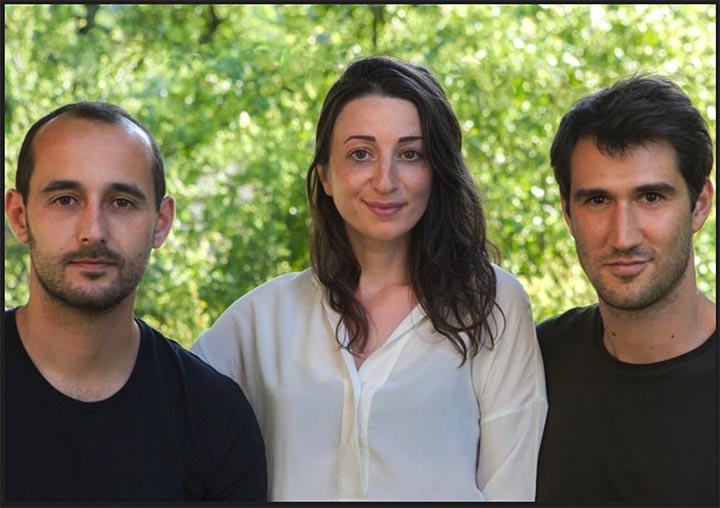
Using this hybrid technology that combines green chemistry and industrial fermentation, the company offers an ecological and competitive alternative to petrochemical-based dyes and pigments, with products designed for the textile, ink, paint and plastics industries.
In October, Pakistani denim manufacturer AGI Denim introduced fabrics dyed with products from Huue, the Berkeley, California, USA, start-up that uses microbial fermentation to digest sugars that produce natural enzymes to create bio-based indigo. Huue secured $14.6 million USD in funding in 2022.
Carbon-Negative Black Pigment
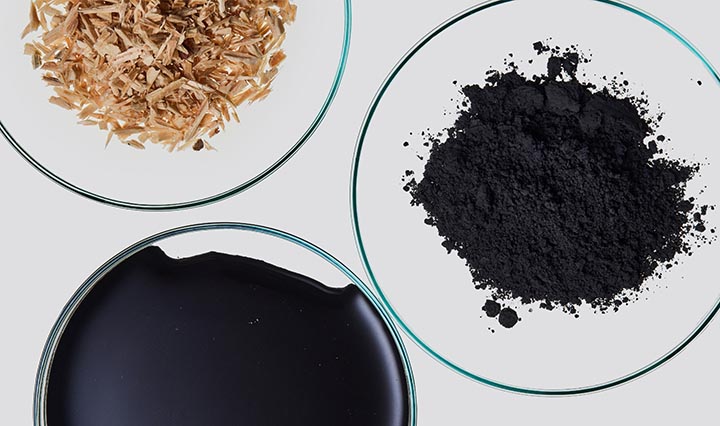
Meanwhile, BioBlack TX by Nature Coatings, a 100% bio-based, certified and carbon-negative black pigment that can replace petroleum-based carbon black, is being used by denim manufacturers Artistic Milliners of Pakistan and Orta of Türkiye and was featured in a recent Levi’s collection.
The chemistry used to produce BioBlack TX involves a water-based dispersion featuring a proprietary pigment derived from industrial wood waste that comes from sustainably managed and Forest Stewardship Council-certified sources from the timber, paper, furniture and flooring industries. The pigment is produced in a closed-loop, circular manufacturing system. The only by-product is steam, which is captured and reused to power some of the production facilities.
The black pigment dispersion’s unique blue undertone lends depth to a garment’s coloring, while also demonstrating superior lightfastness compared with conventional dyes, according to Las Vegas, Nevada, USA-headquartered Nature Coatings, which has received investment from Hollywood actor and environmentalist Leonardo DiCaprio, among others.
BioBlack TX was used for floral prints in the spring/summer 2023 Levi’s WellThread collection, and the pigment has also been used by Kering Group, Bestseller’s Jack & Jones and Selected Homme.
Genetic Engineering
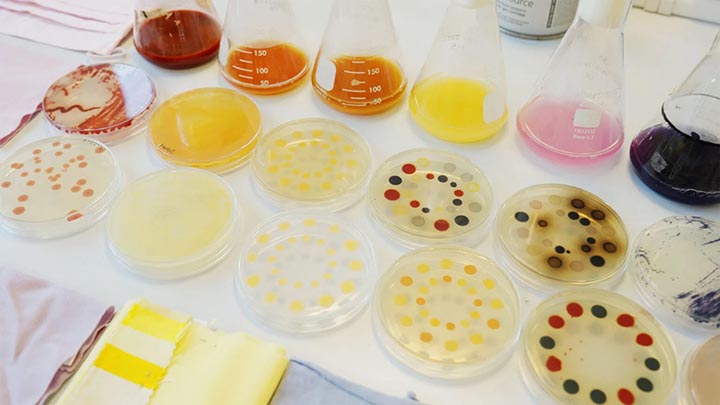
Norfolk, UK-based Colorifix has brought several pigments to market since its establishment in 2016 including indigos, mauves, pastels and beiges – all made by bacteria genetically engineered to produce certain color-making enzymes.
The company uses a DNA database to identify which enzymes are responsible for the natural color of different animals, plants, insects or microbes. Via online DNA sequencing the exact genes that lead to the production of the pigment are identified and that DNA code is translated into the microorganism, which can then produce the pigment as produced in nature.
The bacteria are left to multiply via fermentation in a liquid culture in bio-reactors, growing on renewable feedstocks such as sugar, yeast and plant by-products. The resulting dye liquor is then transferred to a standard dyeing machine where the dye can easily be transferred to the yarn or fabric inside, spreading out to produce an even color. The bacteria are killed through the application of heat, which also helps to fix the color.
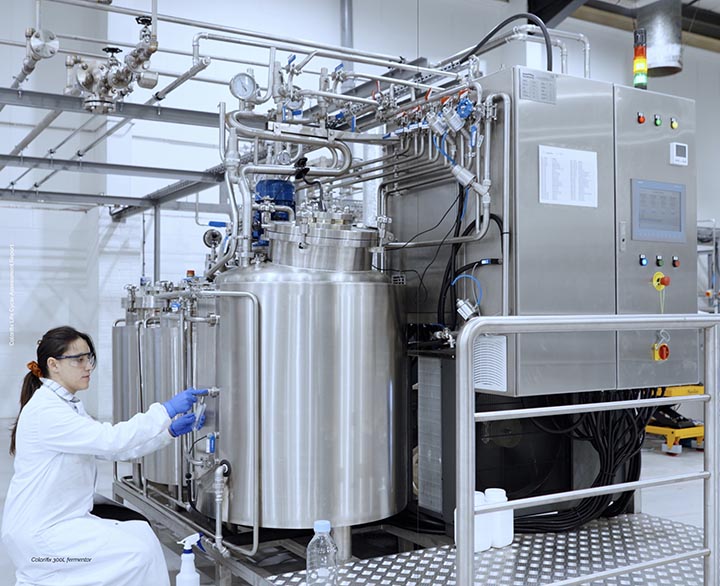
According to Colorifix, its process eliminates some of the environmental issues associated with dyeing while significantly reducing others. Compared with conventional dyeing, the process uses 80% less chemicals, 77% less water and produces 31% fewer carbon dioxide emissions, claims the company, which has ambitions to dye 15% of the world’s clothing by 2030 – a target that is perhaps overly optimistic, but a noble aspiration, nevertheless.
Fabrics dyed with Colorifix’s pigments have already been used by Swedish fashion retailer H&M and the London, UK, experimental clothing label Vollebak, which used a color based on the enzymes of the indigo plant to produce its DNA T-shirt.
Bacterial dyeing is also being pioneered by the lifestyle brand Normal Phenomena of Life, which is dedicated to bio-design, while others, such as Danish fashion brand Ganni, are using the organisms to grow an all-natural leather alternative called “bacterial cellulose.”
Cultural Tradition
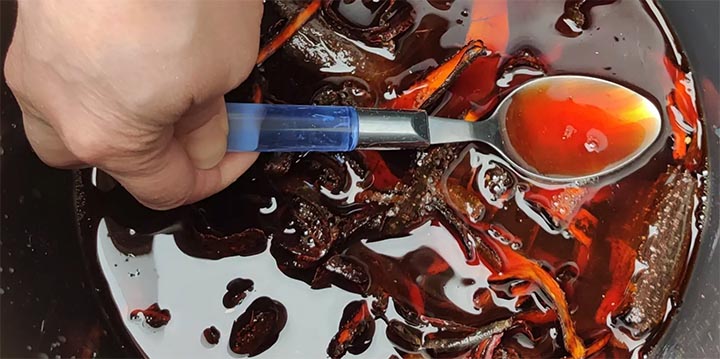
And last year the Faculty of Educational Sciences at the University of Helsinki, Finland, received a grant worth €1.68 million under the European Union’s Horizon Europe framework program for Colour4CRAFTS, a multidisciplinary project that combines the cultural tradition of dyes and textile dyeing with the development of novel dyeing techniques and bio-based dyes.
The focus of the project is on modifying the structures of color compounds used historically and extracted from plant sources and their properties by means of synthetic chemistry.


